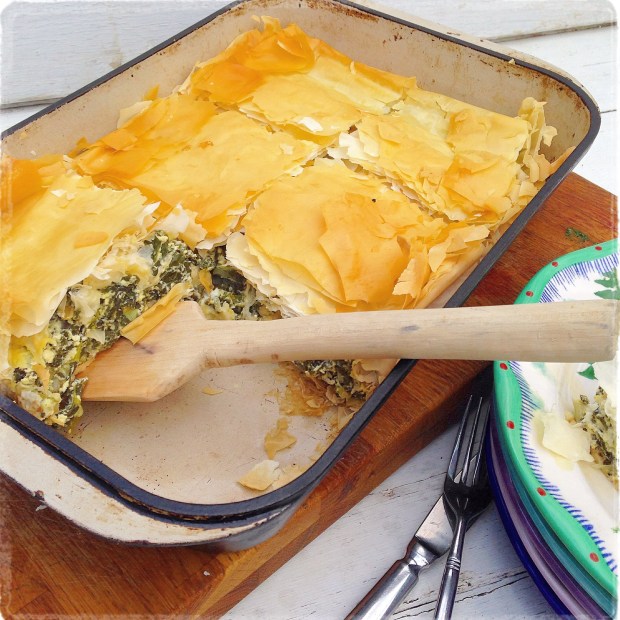This was a tricky one! We don’t grow damsons, daikon or dragonfruit on our allotment. We grow lots of daisies, docks and dandelions and seriously considered ‘D for dandelion’ (so tasty in spring salads), but in the end it was the dainty and delicious dill that got the honour of being included in our A-Z of favourite allotment fruit and veg. Hooray!
We grow dill as a companion plant and edible herb – its fresh, zesty flavour and versatile seeds make it a brilliant addition to salads, soups and chutneys and an excellent defence against caterpillars! It’s well worth saving a space in your garden for a lovely little patch of dill…
Dill
- Variety Tetra & Domino
- Plant Early-spring to early-summer in well-drained, weed free soil & full sun. Direct or in modules 0.5cm deep. Thin to 20x20cm. Bolts rapidly, so early sowings and successional sowings work well. Can overwinter if sheltered.
- Grow Grows to around 90cm high. Keep weed free.
- Harvest 8-10 wks after sowing. Pick & eat deliciously tasty leaves and flowerbuds or leave to go to seed. Seed can be stored and used in cooking or sow again next year!
- Biodynamic tips Leaf crop. Sow on a waxing moon. Plant & weed on a descending moon. Harvest on an ascending moon.
- Natural remedies A great companion plant. Attracts many beneficial insects.
Planting guide by Homegrown Kate www.homegrownkate.com
Planting:
- Early-spring to early-summer in well-drained, weed-free soil and full sun.
- Direct or in modules 0.5cm deep.
- Thin to 20x20cm.
- Bolts rapidly, so early sowings and successional sowings work well.
- Can be overwintered if sheltered.
Growing:
- We grow our dill in amongst other leaf crops such as kale, fennel, cabbages and spinach, where it attracts beneficial insects to keep pests off the surrounding leaf crops.
- Most varieties grow to around 90cm in height.
- Keep surrounding soil weed free.
Harvesting:
- 8-10 wks after sowing.
- Leaves, flowers and seeds are all edible. Pick the leaves and flowerbuds as and when you need them or leave the flowerheads to go to seed.
- Harvest seeds around mid-summer when green and ripe and leave them to dry in a paper bag or let the flowerheads dry on the stem and collect seeds in late-summer when they’re brown.
- Store seeds in a paper envelope.
- Dill is very pretty and and will happily populate your whole garden! Best to harvest seedheads before they scatter with the winds…

Biodynamic tips: To make use of these tips you’ll need a biodynamic or lunar gardening calendar. More information about biodynamic gardening can be found here.
- All work is carried out on a leaf day.
- Sow when the moon is waxing (as close to the full moon as possible) for best germination.
- Plant out when the moon is descending to encourage super-strong root formation.
- Hoe and weed when the moon is descending.
- Harvest when the moon is ascending, so that all the energy and goodness of the plant is drawn into the upper parts (the bit you’re going to eat!)
Natural remedies: A brilliant companion plant. The flowers attract many beneficial insects such as lacewings, pirate bugs, hoverflies and parasitic wasps, which feast on aphids and keep the caterpillars of the ‘cabbage white’ at bay. Yay!
Health Benefits: Dill is a great remedy for digestive & menstrual complaints due to its anti-spasmodic properties. It supports the health of the immune system with potent anti-microbial, anti-inflammatory and antiviral properties and is a good source of vitamins A and C, calcium, manganese and iron, plus high levels of antioxidants help to fight free radical damage. You can even chew the seeds for sweet-smelling breath!
Recipes: There’s so much you can do with dill! The leaves are deliciously sweet and refreshing in salads; the seeds are great in stews, soups, pickles, preserves, even in a pepper grinder and cucumbers taste amazing when pickled with a dill flowerhead! Try a simple dip of natural yoghurt, with diced fresh cucumber, chopped dill and a pinch of cayenne pepper. Yum!


I’m going to have to go hungry waiting til May before I can have my breakfasts then 😉
LikeLike
You write so lovingly of all these plants, I just want to go out and plant them immediately!!!! And yes please re breakfast book. I need some inspiration too!!
LikeLike
Hi Di. I do indeed love all these plants – I’m really happy that comes across in my writing! Superfood Breakfasts is due out on the 3rd May. You get a sneak-peek of the cover and can even pre-order if you want to on Amazon or DK! Kate. xx http://www.dk.com/uk/9780241259900-superfood-breakfasts/
LikeLike
D for Delightful. And for Deiicious spinach pie 🙏🏻
LikeLike
Thanks Mickey. Can’t wait to get out and plant some more dill in the garden! xx
LikeLike
Am loving getting these updates regularly again. And have been trying some recipes from the Energy Bites book, really enjoying those too. I think you said at some point that you have a book on breakfasts coming out… any update on that? Would love some breakfast inspiration for this family so eagerly awaiting news on that 🙂
LikeLike
So glad you’re enjoying getting all my posts and that you’re having fun making ‘energy bites’. Yay! And you’re right, we’ve been busy making a new book called ‘Superfood Breakfasts’ which comes out on 3rd May. You get a sneak-peek of the cover and can even pre-order if you want to on Amazon or DK! Kate. xx http://www.dk.com/uk/9780241259900-superfood-breakfasts/
LikeLike